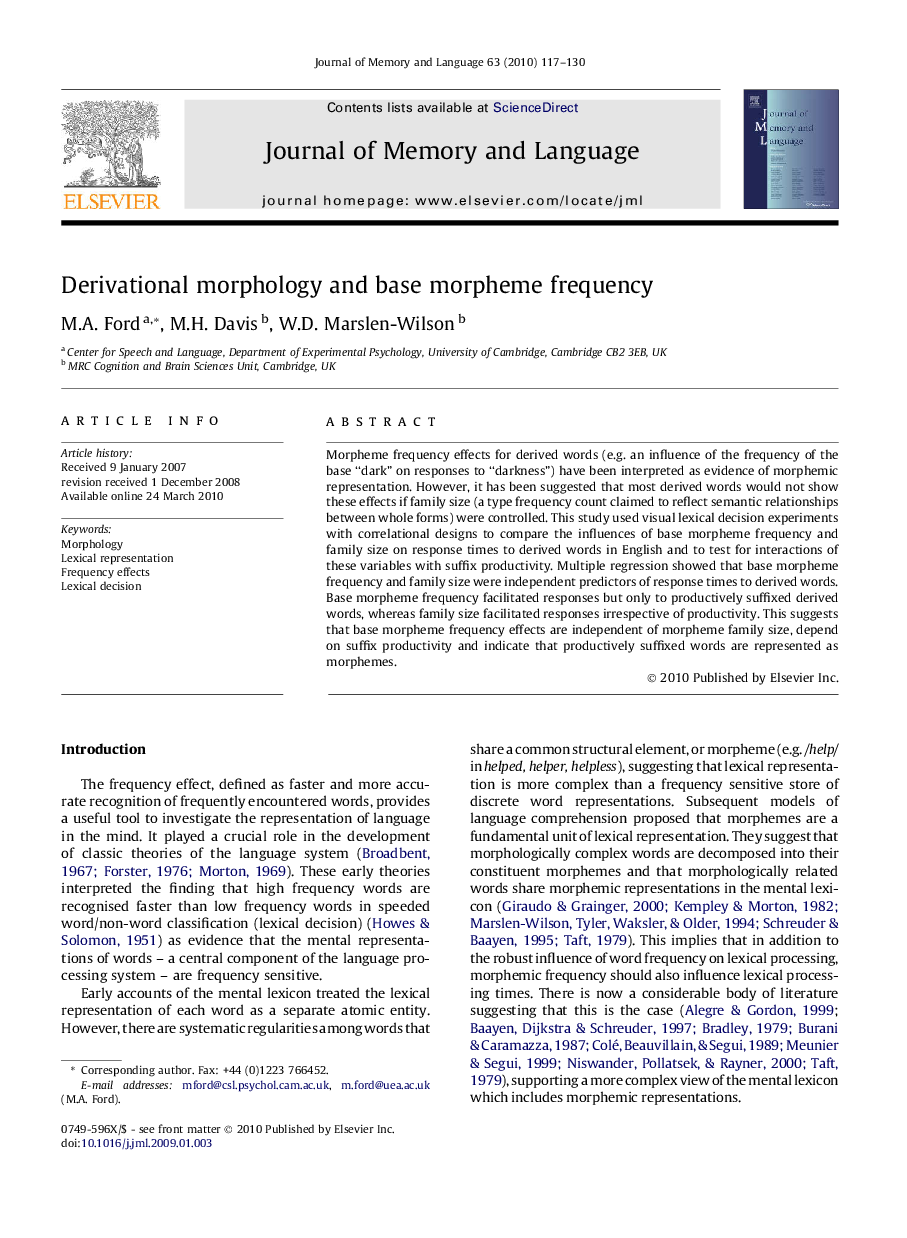| Article ID | Journal | Published Year | Pages | File Type |
|---|---|---|---|---|
| 932012 | Journal of Memory and Language | 2010 | 14 Pages |
Morpheme frequency effects for derived words (e.g. an influence of the frequency of the base “dark” on responses to “darkness”) have been interpreted as evidence of morphemic representation. However, it has been suggested that most derived words would not show these effects if family size (a type frequency count claimed to reflect semantic relationships between whole forms) were controlled. This study used visual lexical decision experiments with correlational designs to compare the influences of base morpheme frequency and family size on response times to derived words in English and to test for interactions of these variables with suffix productivity. Multiple regression showed that base morpheme frequency and family size were independent predictors of response times to derived words. Base morpheme frequency facilitated responses but only to productively suffixed derived words, whereas family size facilitated responses irrespective of productivity. This suggests that base morpheme frequency effects are independent of morpheme family size, depend on suffix productivity and indicate that productively suffixed words are represented as morphemes.
